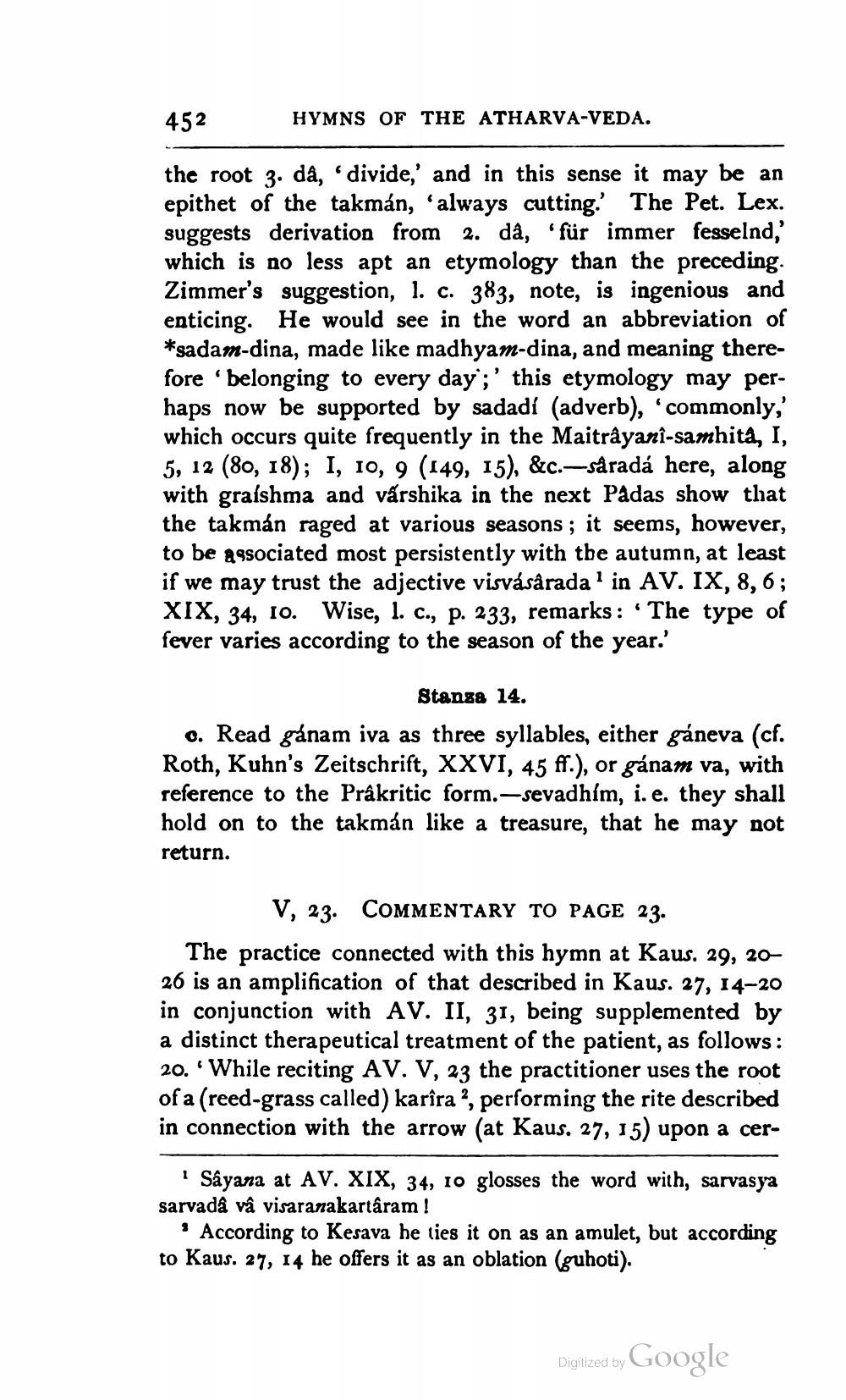________________
452
HYMNS OF THE ATHARVA-VEDA.
the root 3. da, divide,' and in this sense it may be an epithet of the takmán, 'always cutting. The Pet. Lex. suggests derivation from 2. då, 'für immer fesselnd,' which is no less apt an etymology than the preceding. Zimmer's suggestion, I. c. 383, note, is ingenious and enticing. He would see in the word an abbreviation of *sadam-dina, made like madhyam-dina, and meaning therefore 'belonging to every day;' this etymology may perhaps now be supported by sadadi (adverb), 'commonly,' which occurs quite frequently in the Maitrayanî-samhita, I, 5, 12 (80, 18); I, 10, 9 (149, 15), &c.- såradá here, along with grasshma and vấrshika in the next Padas show that the takmán raged at various seasons; it seems, however, to be associated most persistently with the autumn, at least if we may trust the adjective visvásåradain AV. IX, 8,6 ; XIX, 34, 10. Wise, 1. c., p. 233, remarks: The type of fever varies according to the season of the year.'
Stansa 14. o. Read gánam iva as three syllables, either gáneva (cf. Roth, Kuhn's Zeitschrift, XXVI, 45 ff.), or gánam va, with reference to the Prakritic form.-sevadhím, i.e. they shall hold on to the takmán like a treasure, that he may not return.
V, 23. COMMENTARY TO PAGE 23. The practice connected with this hymn at Kaus. 29, 20 26 is an amplification of that described in Kaus. 27, 14-20 in conjunction with AV. II, 31, being supplemented by a distinct therapeutical treatment of the patient, as follows: 20. 'While reciting AV. V, 23 the practitioner uses the root of a (reed-grass called) karîra?, performing the rite described in connection with the arrow (at Kaus. 27, 15) upon a cer
Sâyana at AV. XIX, 34, 10 glosses the word with, sarvasya sarvadå vâ visaranakartaram!
• According to Kesava he lies it on as an amulet, but according to Kaus. 27, 14 he offers it as an oblation (guhoti).
Digized by Google




